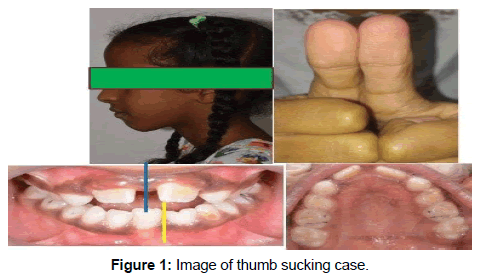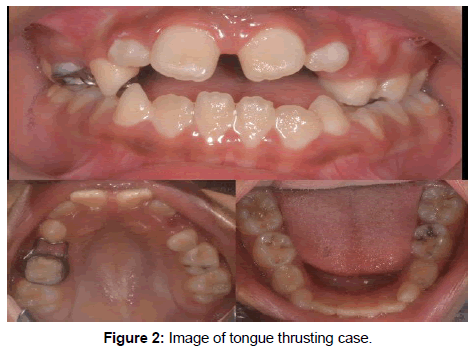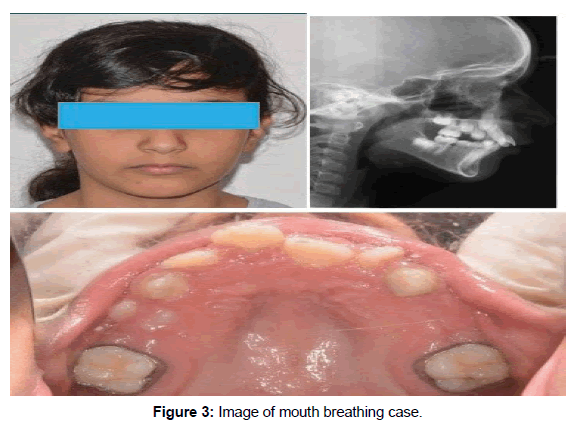The Prevalence of Parafunctional Habits in Taif, Kingdom of Saudi Arabia
Mohammed Mamdouh Aldawood1*, Nayef H Felemban2, Raghu Devanna2, Yousef Althomali2, Amith Vasantakumar Holenarasipur3, Mohammed Mastour Alharthi1 and Abdullah Owaid Alotaibi1
1College of Dentistry, Taif University, Taif, KSA
2Department of Preventive Dentistry, Orthodontic Division, College of Dentistry, Taif University, Taif, KSA
3Department of Community and Preventive Dentistry, College of Dentistry, Taif University, Taif, KSA
- *Corresponding Author:
- Dr. Mohammed Mamdouh Aldawood
Intern, College of Dentistry, Taif University, Taif, KSA
Tel: +966531244223
E-mail: m.aldawood@tudent.edu.sa
Citation: Aldawood MM, et al. The Prevalence of Parafunctional Habits in Taif, Kingdom of Saudi Arabia. Ann Med Health Sci Res. 2020;10: 942-945.
Abstract
Background: Oral habits could be functional or parafunctional. The first result from repeating a normal function while the second are acquired by practicing a nonfunctional or unnecessary action. The parafunctional habits that have been observed with the highest prevalence are finger and lip sucking; biting (objects, onychophagia, cheilophagia and tongue protraction), bruxism and mouth breathing. Some of the negative sequel associated with prolonged habits like digit and non-nutritive sucking behaviours and tongue thrusting include a higher incidence of anterior open bite, maxillary incisor protrusion, class II canine relationship, distal step molar relationship, posterior cross bites, and lip incompetence. The prevalence of oral habits in schoolchildren has not been clearly documented in different population groups across Saudi Arabia. Hence, the aim of this study is to determine the prevalence of oral habits among 7 to 15 years old school children in Taif, Saudi Arabia. Methods: This crosssectional study was conducted at the Faculty of Dentistry, Taif University Taif, Kingdom of Saudi Arabia between January and June 2019. The study population between 7 and 15 years of age who were attending to the dentistry clinics at Taif University. Children with mental retardation, severe chronic diseases, syndromes or systematic disease that could affect the maxillofacial area were excluded. The total sample included 566 children, both males (358) and females (208). Study subjects were selected by systematic random sampling. The data was recorded by clinical examination without radiographs according to the clinical parameters and clinical findings. It was carried out by 6 examiners following WHO guidelines 9. All the data gathered were coded and entered into SPSS, version 21.0, IBM. The data were checked for normality using Kolmogorov smirnov statistics and appropriate statistical tests were used. Categorical variables were counted and expressed as frequencies and percentages. Chi square test was used to determine the significance and the p=0.05 was considered as statistically significant. Results: Percentage of total prevalence of oral habits for thumb sucking, tongue thrusting and mouth breathing was 10.7%, 20.84%, and 6.18% of the study sample, respectively. In addition, the percentages of boys affected by thumb sucking, tongue thrusting and mouth breathing were 13%, 26% and 8%, respectively. Whereas, girls with thumb sucking, tongue thrusting and mouth breathing account for 5%, 12% and 2%, respectively. Boys had a significantly higher percentage of thumb sucking than girls (χ2=10.058, p=0.001). Similarly, tongue thrusting and mouth breathing were more prevalent in boys than girls and the differences were statistically significant (χ2=15.534 and 8.009, respectively; p=0.000 and 0.0004 respectively). Conclusions: The prevalence of parafunctional habits was found to be statistically significant in the Al-Taif region of Kingdom of Saudi Arabia. The prevalence of thumb sucking, tongue thrusting and mouth breathing was 10.7%, 20.84%, and 6.18% respectively. Boys showed statistically higher prevalence of thumb sucking, tongue thrusting and mouth breathing than girls. Proper preventive measures at an early age by parents as well as general dental practitioners is need of time for preventing future deleterious effects from such habits.
Keywords
Prevalence; Parafunctional habit; Saudi population; General dental practice
Introduction
Oral habits can be classified into two types as functional or parafunctional. Functional oral habits area results of repeating normal function. The non-functional or unnecessary acquired practices are termed parafunctional habits. The diagnosis of parafunctional habits and its impact on the growth and development of jaws and normal occlusion is of paramount importance as it may cause malocclusion. Many parafunctional habits have been reported to be associated with malocclusion. Some of them which are always of importance for research being tongue thrusting, mouth breathing, thumb sucking, bruxism. The intensity, duration and direction of these habits play a major role in the severity of the impact on the child practicing the habit. The various effects on the developing child’s craniofacial skeleton varies according to the variables involved in the particular parafunctional habit. It includes the structural relationship of the stomatognathic system as well as effects of environmental factors. The negative sequelae of the prolonged parafunctional habits include protrusion of maxillary incisors, lip trap, anterior openbite, potentially incompetent lips, and class II canine and molar relationships. There are a very few studies documented from the kingdom of Saudi Arabia regarding the prevalence of these parafunctional habits especially from the western region of Makkah. Taif city is place in Saudi Arabia, which is relatively well isolated from the modern society influences like other cities of the kingdom like Riyadh and Jeddah. The commonness of these habits in children of Taif city is unexplored till recently as per our literature search. With this background, the main objective of this cross sectional study is to ascertain the commonness of parafunctional oral habits among 7 to 15 aged children in the city of Taif, Saudi Arabia.
Materials and Methods
This cross-sectional study was conducted at the Faculty of Dentistry, Taif University Taif, Kingdom of Saudi Arabia between January and June 2019. Ethical approval was obtained from the College of Dentistry Research Centre (CDRC). The study population of age 7 to 15 years was screened, reporting to the dentistry clinics at Taif University. Children with mental retardation, severe chronic diseases, syndromes or systematic disease that could affect the stomatoganthic region were excluded. Sample size was totally 566 children which included both males (358) and females (208). Subjects were selected by systematic random sampling. Recording the data started after sign of informed consent by parents or guardians [Form 1, Supplementary file]. Subjects reserved all their rights as stated in the Declaration of Helsinki. The intraoral clinical examination was done by using latex gloves, mouth mirrors and other necessary examination materials like cotton and water. The data was recorded by clinical examination according to the clinical parameters and clinical findings [Tables 1-3 and Figures 1-3]. The clinical examination was done by 6 examiners following Organization WH [1] standards [Form 2, Supplementary file]. Inter-examiner calibration was done by training the examiners together before the start of the study to ensure unbiased examination of the questions and application of the diagnostic criteria. Examiners finished a survey about the child’s situation related with the expression of these habits.
| Table 1: Thumb sucking and its clinical parameters. | |
| Thumb Sucking | Clinical Parameters |
| 1 | V-shape arch |
| 2 | Proclination of anterior teeth |
| 3 | Dishpan thumb |
| Table 2: Thumb thrusting and its clinical parameters. | |
| Tongue Thrusting | Clinical Parameters |
| 1 | Open bite |
| 2 | Tongue out during swallowing |
| 3 | S" pronunciation problem" |
| Table 3: Mouth breathing and its clinical parameters. | |
| Mouth Breathing | Clinical Parameters |
| 1 | Water holding test |
| 2 | Long face |
| 3 | V-shape arch |
| 4 | Butterfly test |
Statistical analysis
All the data gathered were condensed into SPSS, version 21.0, IBM. The data were checked for normality using Kolmogorov Smirnov statistics and appropriate statistical tests were used. Categorical variables were counted and expressed as frequencies and percentages. Chi square test was used to determine the significance and the p=0.05 was considered as statistically significant.
Results
Results showed that the percentage of total prevalence of oral habits for thumb sucking, tongue thrusting and mouth breathing was 10.7%, 20.84%, and 6.18% of the study sample, respectively [Table 4]. In addition, the percentages of boys affected by thumb sucking, tongue thrusting and mouth breathing were 13%, 26% and 8%, respectively. Whereas, girls with thumb sucking, tongue thrusting and mouth breathing account for 5%, 12% and 2%, respectively [Table 5]. Boys had a significantly higher percentage of thumb sucking than girls (χ2=10.058, p=0.001). Similarly, tongue thrusting and mouth breathing were more common in boys than girls and the differences were statistically significant (χ2=15.534 and 8.009, respectively; p=0.000 and 0.0004 respectively) [Table 5].
| Table 4: Frequency of distribution of oral habits among the examined sample. | |||
| S. No. | Habit | n=566 | Percentage of Habit (%) |
| 1 | Thumb Sucking | 57 | 10.07 |
| 2 | Tongue Thrusting | 118 | 20.84 |
| 3 | Mouth Breathing | 35 | 6.18 |
| Table 5: Parafunctional oral habits and its relation to gender. | ||||||
| Habit | Males (358) | Females (208) | X2 | p-value | ||
| Affected | Unaffected | Affected | Unaffected | |||
| Thumb Sucking | 47 (13%) | 311 (87%) | 10 (5%) | 198 (95%) | 10.058 | 0.001* |
| Tongue Thrusting | 93 (26%) | 265 (74%) | 25 (12%) | 183 (88%) | 15.534 | 0.000* |
| Mouth Breathing | 30 (8%) | 328 (92%) | 5 (2%) | 203 (98%) | 8.099 | 0.004* |
| *Significant at 5% level of significance | ||||||
Discussion
The subject examined in this study represents the youth population of the city of Taif located in the western province in the Kingdom of Saudi Arabia. Clinical extra oral and intraoral investigation of the children was done to verify the presence of parafunctional oral habits. This was done to give more socially desirable answers for denying habits so as to decrease the proneness towards these habits. In this current study the prevalence of thumb-sucking, tongue thrusting and mouth breathing, was found to be 10.7%, 20.84%, and 6.18% of the study sample, respectively. Contrary to these findings was the observation by Murshid ZA, et al. [2] who found the prevalence of thumb sucking and mouth breathing 13.6% and 16.7% respectively. Although the study of Murshid ZA, et al. [2] was carried out in Jeddah city which is also located in the western province of kingdom of Saudi Arabia, the prevalence of habits was found to be much lesser in our study in comparison. This may be due to the fact that Jeddah is more modernized influenced by the modernization as compared to Taif city. Soheila panahi [3] did study the children who undergo a lot of stress under the influence of modernization. According to this study psychosocial influence of modernization on the children cannot be denied. Shetty SR, Munshi AK [4] (1998) and Guaba K, et al. [5] who observed that only 3% of children aged 6-15 years old demonstrated oral habits. In addition, Bosnjak A, et al. [6] reported that 33.3% of the screened children in the mixed dentition stage exhibited oral habits. The causes for inconsistent values of these retrospective reports may be due to to different methods used for assessment of oral habits, different populations investigated, ages and socio-economic status of the population involved. In our study, the parafunctional habits showed an increased prevalence due to many factors which need an exploration in future studies.
Conclusion
The prevalence of parafunctional habits was found to be statistically significant in the Al-Taif region of Kingdom
of Saudi Arabia. The prevalence of thumb sucking, tongue thrusting and mouth breathing was 10.7%, 20.84%, and 6.18% respectively. Boys showed statistically higher prevalence of thumb sucking, tongue thrusting and mouth breathing than girls. Proper preventive measures at an early age by parents as well as general dental practitioners is need of time for preventing future deleterious effects from such habits.
Competing Interests
The authors declare that they have no competing interests.
Acknowledgement
Authors would like to thank the respected Dean Dr Ammar Saleh Alshamrani, College of Dentistry, Taif University for providing an opportunity to conduct this cross sectional study and allow referral of the patients who were in need of an early orthodontic intervention in this region of taif city for the parafunctional habits with which they were diagnosed.
Authors also extend their gratitude to the Clinical Director of Taif University Dental Hospital, Dr Mohammed Sami Felimban, for the support in conducting the clinical examination of the subjects with the parafunctional habits and further follow up for the early correction of the same.
Authors are thankful to laboratory in charge Dr Ali Saleh Alzahrani and laboratory staff for their contribution in appliance fabrication and delivery of the appliances to the needy for the early treatment of referred subjects.
References
- Organization WH. Oral health surveys: Basic methods. In: World Health Organization. 2013.
- Murshid ZA, Abdulaziz AA, Amin HE, Al-Nowaiser AM. Assessment of parafunctional oral habits among a sample of Saudi dental patients. JKAU: Med Sci. 2007;14:35-47.
- Panahi S. Impact of modernization on development of adolescents the media, culture, technology. Unique J Pharma Biol Sci. 2015;3:15-22.
- Shetty SR, Munshi AK. Oral habits in children-A prevalence study. J Indian Soc Pedod Prev Dent. 1998;16:61-66.
- Guaba K, Ashima G, Tewari A, Utreja A. Prevalence of malocclusion and abnormal oral habits in North Indian rural children. J Indian Soc Pedod Prev Dent. 1998;16:26-30.
- Bošnjak A, Vu?i?evi?-Boras VA, Mileti? I, Bo?i? D, Vukelja M. Incidence of oral habits in children with mixed dentition. J Oral Rehabil. 2002;29:902-905.







 The Annals of Medical and Health Sciences Research is a monthly multidisciplinary medical journal.
The Annals of Medical and Health Sciences Research is a monthly multidisciplinary medical journal.